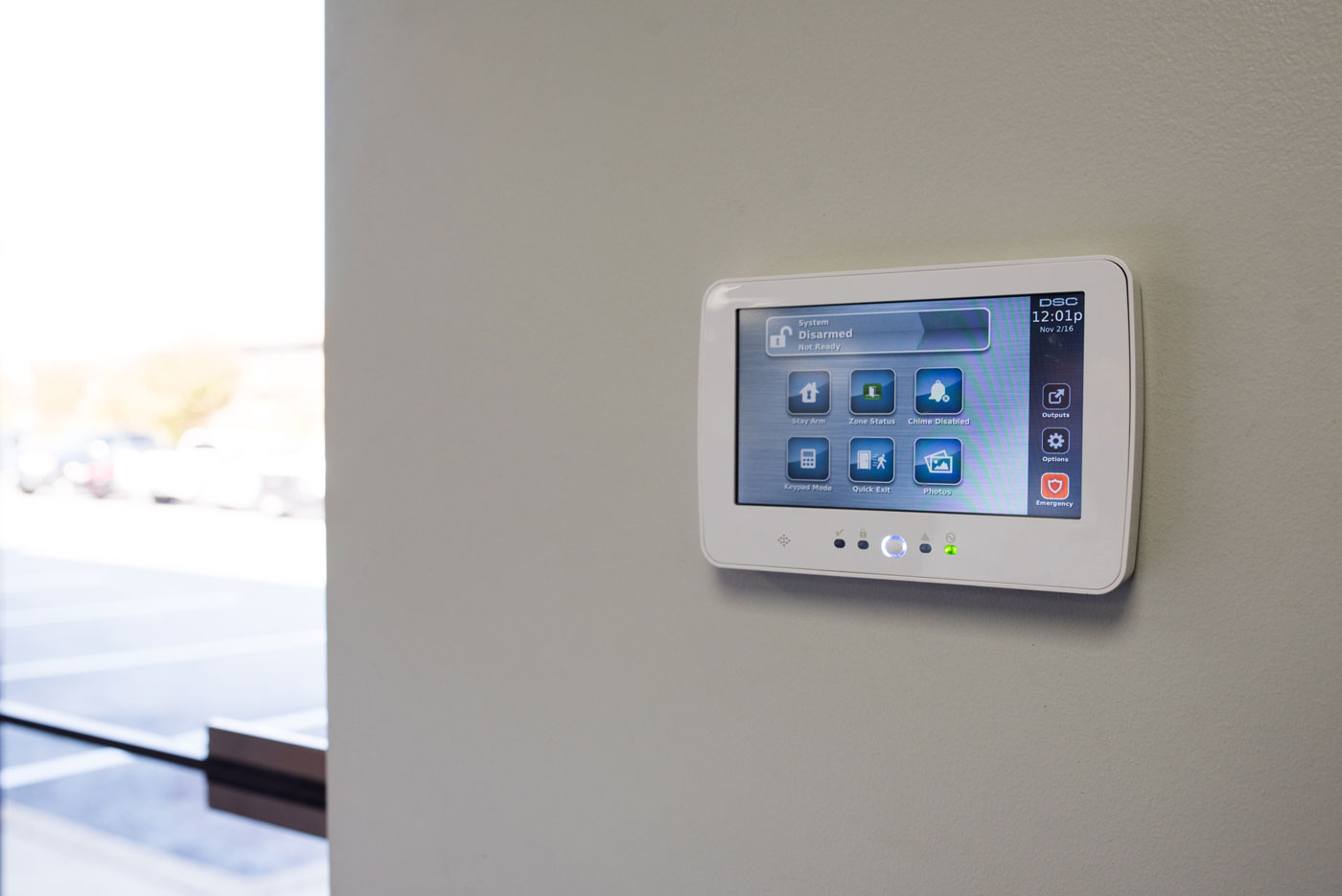Home>Home Security and Surveillance>What Are The Disadvantages To A Host-Based Intrusion Detection System (HIDS)


Home Security and Surveillance
What Are The Disadvantages To A Host-Based Intrusion Detection System (HIDS)
Modified: March 20, 2024
Learn why a Host-Based Intrusion Detection System (HIDS) is a beneficial choice for home security and surveillance, providing advanced protection against potential threats.
(Many of the links in this article redirect to a specific reviewed product. Your purchase of these products through affiliate links helps to generate commission for Storables.com, at no extra cost. Learn more)
Introduction
Home security and surveillance are essential to protect our homes and ensure the safety of our loved ones. With advancements in technology, homeowners now have access to a wide range of security solutions to meet their specific needs. One such solution is the Host-Based Intrusion Detection System (HIDS), which plays a crucial role in safeguarding our homes from potential threats.
In this article, we will explore the concept of HIDS and delve into its advantages. However, we will also take a different approach by discussing what is not a disadvantage to a HIDS. By understanding what HIDS does not lack, we will gain a holistic perspective on its capabilities and appreciate its effectiveness in home security.
But first, let’s establish a solid understanding of what a Host-Based Intrusion Detection System entails.
Key Takeaways:
- Host-Based Intrusion Detection Systems (HIDS) provide real-time threat detection and granular visibility, enhancing home security without relying on network connectivity.
- While HIDS offer valuable security benefits, they are not a standalone solution and require human intervention, regular updates, and complementary security measures.
Overview of Host-Based Intrusion Detection Systems (HIDS)
A Host-Based Intrusion Detection System (HIDS) is a security tool designed to detect unauthorized activities and potential intrusions within a specific host or system. Unlike network-based intrusion detection systems (NIDS), which monitor network traffic, HIDS focuses on monitoring the activities occurring on a single host.
HIDS operates by analyzing system logs, file integrity, and user behavior, among other indicators. It can detect various types of attacks, such as malware infections, unauthorized access attempts, and system configuration changes. The system continuously monitors the host, comparing the observed behavior against a predefined set of rules or behavioral patterns.
With HIDS, real-time alerts are generated when suspicious activities are identified. These alerts can be sent to system administrators or security personnel, allowing them to take swift action to prevent an intrusion or mitigate its impact.
Common components of a HIDS include:
- Agent: The software installed on each host that collects and analyzes data.
- Centralized Management Console: The interface used by system administrators to monitor and manage the HIDS.
- Log Analyzer: A component that analyzes system logs and identifies potential security threats.
- Rule-based Engine: An engine that checks events against predefined rules and triggers alerts when suspicious activities are detected.
Now that we have a basic understanding of HIDS, let’s explore its advantages and how it can enhance home security.
Advantages of Host-Based Intrusion Detection Systems (HIDS)
Host-Based Intrusion Detection Systems (HIDS) offer several advantages that make them a valuable tool in home security. Let’s explore some of the key benefits:
- Granular Visibility: HIDS provide detailed insights into the activities occurring at the host level. They can monitor and analyze log files, system calls, and user behavior, allowing for granular visibility into potential security issues. This level of visibility is crucial in detecting and responding to threats promptly.
- Real-Time Threat Detection: HIDS continuously monitor the host and can detect malicious activities in real-time. By analyzing system logs and behavioral patterns, they can quickly identify indicators of compromise or potential unauthorized access attempts. This real-time threat detection enables immediate response, minimizing potential damage to the system.
- Customization and Flexibility: HIDS can be customized and tailored to the specific needs of homeowners. System administrators can define rules and policies based on their unique security requirements. This flexibility allows for a more effective detection of threats specific to the home environment, ensuring a higher level of security.
- Low False Positive Rate: HIDS are designed to minimize false positives, which helps prevent unnecessary alerts and reduces the burden on system administrators. By employing intelligent analysis techniques and rule-based engines, HIDS can filter out non-malicious activities and focus on identifying genuine security threats.
- No Network Dependencies: Unlike network-based intrusion detection systems, HIDS are not dependent on network traffic for monitoring and detection. This makes them suitable for scenarios where network connectivity may be limited or intermittent, such as in remote or rural areas.
- Compliance with Security Standards: HIDS can assist in meeting regulatory and compliance requirements. With their ability to track user activity, system changes, and potential security breaches, HIDS provide valuable data for auditing and ensuring compliance with security standards.
These advantages make Host-Based Intrusion Detection Systems a valuable tool for home security. By leveraging the capabilities of HIDS, homeowners can strengthen their defenses against potential threats and enjoy a safer living environment.
A benefit of a Host-Based Intrusion Detection System (HIDS) is that it can monitor activity on individual devices, providing detailed insight into potential threats and vulnerabilities.
Identifying What Is Not a Disadvantage to a HIDS
While discussing the advantages of Host-Based Intrusion Detection Systems (HIDS), it is equally important to identify what is not a disadvantage to a HIDS. Understanding these clarifications will provide a more comprehensive perspective on the capabilities and effectiveness of HIDS in home security.
- Does Not Substitute for Other Security Measures: It is crucial to recognize that a HIDS is not intended to replace other security measures like firewalls, antivirus software, or physical security measures. Instead, it complements and enhances the existing security infrastructure by providing an additional layer of protection.
- Does Not Guarantee 100% Security: While a HIDS is effective at identifying and alerting potential security threats, it cannot guarantee absolute security. It is essential to understand that security is a layered approach, and a HIDS is just one component of an overall security strategy.
- Does Not Eliminate the Need for Human Intervention: A HIDS generates alerts when potential security incidents are detected, but human intervention is crucial for responding to and mitigating these threats. System administrators and homeowners still need to take appropriate action in response to HIDS alerts by investigating, addressing, and resolving the identified security incidents.
- Does Not Prevent Insider Threats: While a HIDS can detect outsider attacks and unauthorized access attempts, it may not be as effective in detecting insider threats. Insiders with legitimate access to the system may bypass the HIDS since their actions may not trigger alerts. It is essential to implement other security measures, such as user access controls and monitoring, to address insider threats effectively.
- Does Not Replace Regular Updates and Patch Management: Keeping the host system up to date with the latest security patches and updates is essential. While a HIDS can detect certain attacks, its effectiveness can be compromised if the host system is not properly maintained and updated. Regular patch management and system updates are critical for maintaining a secure environment.
By understanding what is not a disadvantage to a HIDS, homeowners can set realistic expectations and make informed decisions when implementing a home security strategy that includes a Host-Based Intrusion Detection System.
Conclusion
Investing in a comprehensive home security system is crucial to ensure the safety and well-being of our loved ones and protect our valuable assets. Host-Based Intrusion Detection Systems (HIDS) play a vital role in bolstering home security by providing real-time threat detection and granular visibility into potential security risks.
In this article, we explored the concept of HIDS and identified its advantages in enhancing home security. We also highlighted what is not a disadvantage to a HIDS, debunking misconceptions and providing a more balanced understanding of its capabilities.
While HIDS offers numerous benefits, it is important to remember that it is not a standalone solution. It should be implemented alongside other security measures to provide a layered approach to home security. Regular updates and maintenance, strong user access controls, and physical security measures all contribute to a comprehensive security strategy.
By understanding the strengths and limitations of a HIDS, homeowners can make well-informed decisions when it comes to implementing an effective and robust home security system. Combining multiple security measures and leveraging the capabilities of a HIDS will provide a more secure living environment, giving homeowners peace of mind.
Remember, the world of home security is constantly evolving, and it is essential to stay informed about the latest technologies and best practices to stay one step ahead of potential threats. Embracing the benefits of a HIDS as part of an integrated security approach will help create a safer and more secure home for you and your family.
Frequently Asked Questions about What Are The Disadvantages To A Host-Based Intrusion Detection System (HIDS)
Was this page helpful?
At Storables.com, we guarantee accurate and reliable information. Our content, validated by Expert Board Contributors, is crafted following stringent Editorial Policies. We're committed to providing you with well-researched, expert-backed insights for all your informational needs.















